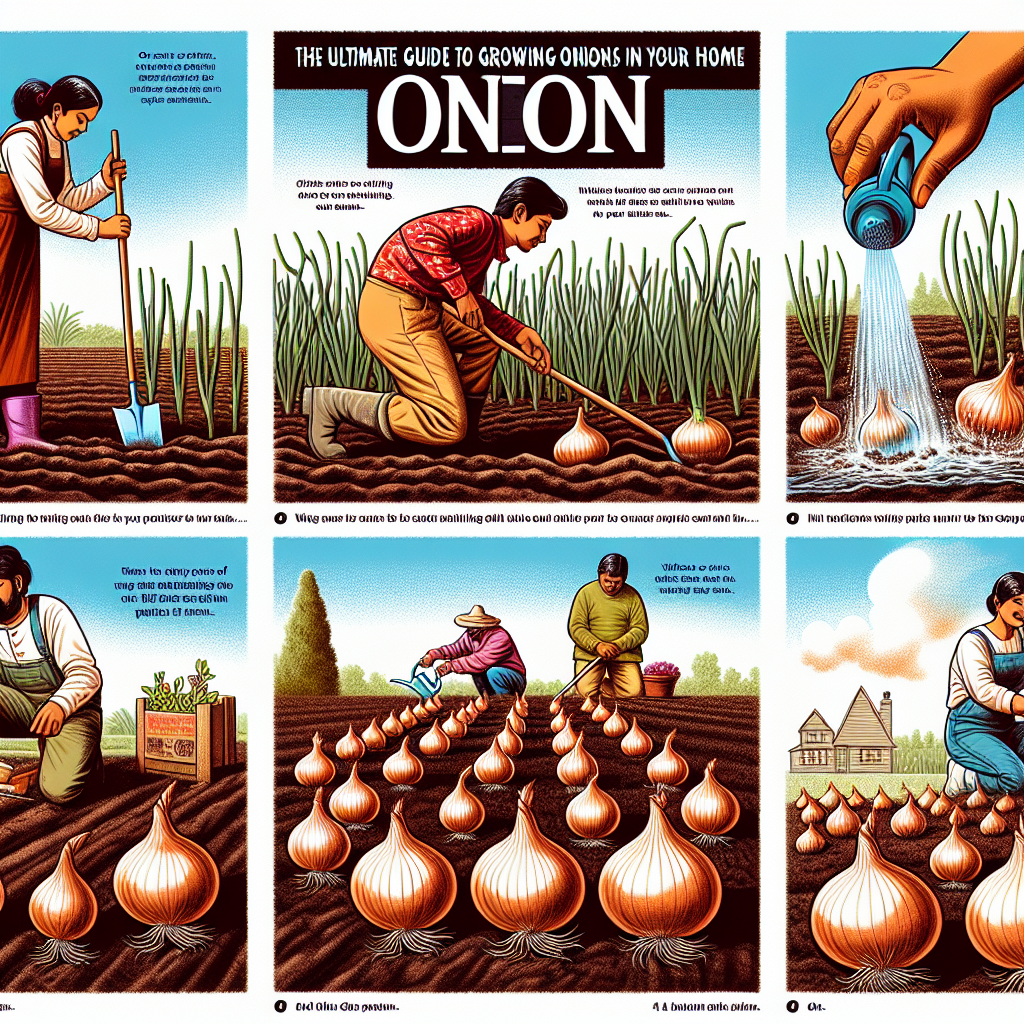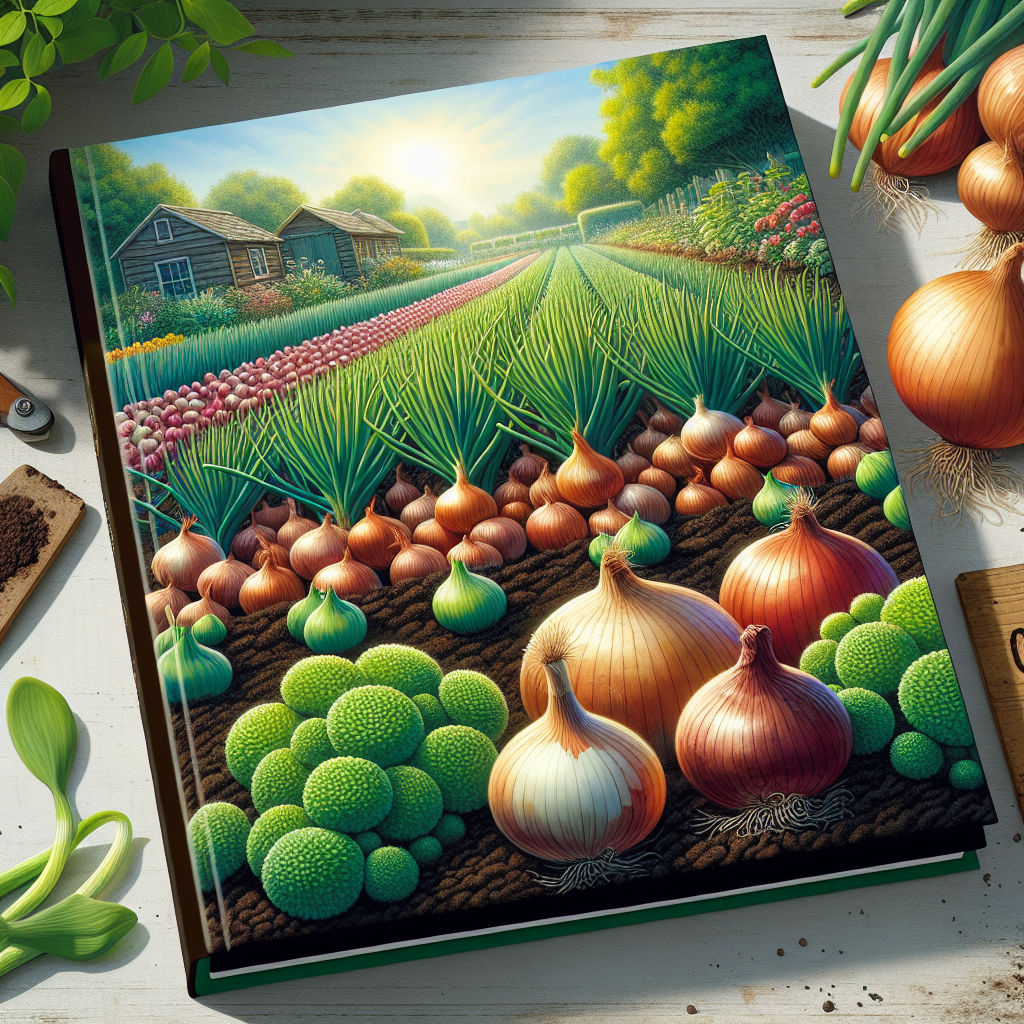The Ultimate Guide to Growing Onions in Your Home Garden
Onions are a versatile and widely used vegetable in kitchens around the world. Not only do they add flavor and aroma to countless dishes, but they also boast numerous health benefits. Growing onions in your home garden is not only a rewarding experience but also a sustainable way to ensure a constant supply of this essential ingredient.
In this ultimate guide, we will take you through the step-by-step process of growing onions in your home garden, from selecting the right variety to harvesting and storing them for later use.
1. Choose the Right Onion Variety
When selecting onion varieties for your home garden, it’s essential to consider factors such as taste, maturity time, and storage potential. Some popular varieties include yellow onions like ‘Stuttgarter’ and ‘Copra,’ red onions like ‘Red Baron,’ and sweet onions like ‘Walla Walla.’
2. Prepare the Soil
Onions thrive in well-drained soil with a pH level between 6.0 and 7.5. Begin by removing any weeds or debris from the garden bed and loosen the soil with a garden fork or tiller. Incorporate organic matter such as compost or well-rotted manure to improve soil fertility.
3. Start Seeds Indoors (Optional)
While onions can be directly sown outdoors, starting seeds indoors gives them a head start before transplanting them into your garden. Use seed trays or pots filled with seed-starting mix, sow seeds thinly, cover lightly with soil, and keep them warm until germination occurs.
4. Transplant Seedlings
Once your onion seedlings have grown to about six inches tall and developed sturdy roots, it’s time to transplant them into your garden bed. Ensure that all risk of frost has passed before moving them outdoors.
5. Planting Onions Outdoors
Plant onion seedlings at least one inch deep into well-prepared soil, spacing them about four to six inches apart. If you prefer larger onions, increase the spacing to allow for more bulb development as they grow. Ensure that the tops of the bulbs are level with or slightly above the soil surface.

6. Watering and Mulching
Onions require consistent moisture but can’t tolerate standing water. Water them deeply whenever the top inch of soil feels dry, ensuring that the moisture reaches the root zone. Applying a layer of organic mulch, such as straw or wood chips, will help conserve moisture and suppress weed growth.
7. Fertilizing Onions
Onions have moderate fertility requirements but benefit from a balanced fertilizer like 10-10-10 applied every three weeks during their growing season. Avoid over-fertilization, as excessive nitrogen can lead to lush foliage at the expense of bulb formation.
8. Weed Control
Keeping your onion garden weed-free is crucial for optimum growth and bulb development. Regularly hand-pull or cultivate around your onion plants to remove any competing weeds.
9. Pests and Diseases
Onions are generally resistant to pests and diseases; however, some common issues include thrips, onion maggots, and downy mildew. Monitor your plants regularly and take appropriate action if any infestation occurs.
10. Harvesting Onions
Knowing when to harvest onions is essential for achieving maximum flavor and storage potential. When the tops start falling over and yellowing, it’s a sign that they’re ready for harvest. Carefully dig up each onion bulb using a garden fork and let them cure in a dry, well-ventilated area for two to three weeks.
11. Storing Onions
Once cured, remove any remaining soil from your onions and trim the tops to about one inch above the bulbs’ necks. Store them in mesh bags or breathable containers in a cool (around 40°F/4°C), dark place with moderate humidity. Properly stored onions can last for several months.
12. Using Homegrown Onions
Now that you have successfully grown and stored your onions, it’s time to enjoy the fruits of your labor. Use them in a wide variety of recipes, from soups and stews to stir-fries and salads, to add depth and flavor to your meals.
In conclusion, growing onions in your home garden is a fulfilling experience that allows you to enjoy fresh, flavorful produce while minimizing your ecological footprint. By following this ultimate guide, you’ll soon be harvesting your own delicious onions and enhancing the taste of your culinary creations. So get started today and embark on the journey of homegrown onions!














